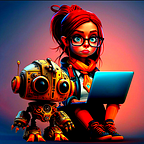Solopreneur’s UX Toolkit: 9 Essentials for Building Products as a One-Person Design Team
💼 9 Essential Insights for Solo Product Designers
Embarking on the journey of building a product as a solo designer can be both exciting and challenging. To help you navigate this path more effectively, here are nine key insights that I wish I had known before starting my own solo product design journey.
1. Define Your Vision Clearly
Before diving into the design process, take the time to define your vision for the product. Understand the problem you’re solving, your target audience, and the unique value proposition of your product. This clarity will guide your design decisions and keep you focused throughout the process.
2. Embrace Iteration
Designing a product is an iterative process. Don’t expect to get everything right on the first try. Embrace feedback from users and stakeholders, and be willing to make changes based on this feedback. Iteration is key to refining your product and improving the user experience.
3. Prioritize User Experience
User experience (UX) should be at the forefront of your design process. Put yourself in the shoes of your users and design with their needs and preferences in mind. A great user experience can set your product apart from the competition and drive user engagement.
4. Stay Agile
As a solo designer, it’s important to stay agile and adaptable. Be prepared to pivot your design direction based on feedback and changing requirements. Agile methodologies like scrum or kanban can help you manage your design process more effectively.
5. Focus on MVP
When building a product as a solo designer, it’s tempting to try to do everything at once. However, focusing on building a minimum viable product (MVP) can help you validate your ideas quickly and reduce the risk of failure. Start with the core features that will provide the most value to your users and iterate from there.
6. Build a Strong Network
Even as a solo designer, it’s important to build a strong network of peers, mentors, and industry experts. This network can provide valuable feedback, support, and guidance throughout your design journey. Attend design events, join online communities, and connect with other designers to expand your network.
7. Learn to Wear Many Hats
As a solo designer, you’ll need to take on multiple roles beyond just design. You may need to handle project management, marketing, and even some development tasks. Be prepared to wear many hats and be willing to learn new skills to succeed.
8. Practice Self-Care
Building a product as a solo designer can be demanding, both mentally and physically. It’s important to practice self-care and avoid burnout. Take breaks when you need them, prioritize your mental health, and seek support from friends and family.
9. Celebrate Your Wins
Finally, don’t forget to celebrate your wins, no matter how small. Building a product as a solo designer is a challenging endeavor, and it’s important to acknowledge and celebrate your successes along the way. This will help keep you motivated and energized for the journey ahead.
Conclusion
Building a product as a solo designer is a rewarding but challenging journey. By defining your vision clearly, embracing iteration, and prioritizing user experience, you can create a successful product that resonates with your target audience. Stay agile, focus on building a minimum viable product, and build a strong network of peers to support you along the way. Remember to practice self-care and celebrate your wins, no matter how small. With perseverance and a commitment to continuous learning, you can navigate the challenges of solo product design and create a product that makes a meaningful impact.
If you found this article helpful, attractive, useful and would like to support me, make sure to:
— — — — — — — — — — — — — — — — — — — — — — — — — — — — — — — — —
Authored by: [Niamh]
This collaborative research-driven exploration required [1] day of dedication and [2 to 3] hours of meticulous crafting.
Let’s get connected on Twitter: [@niamh_dcreator]
Thank you for your interest.
— — — — — — — — — — — — — — — — — — — — — — — — — — — — — — — — —
